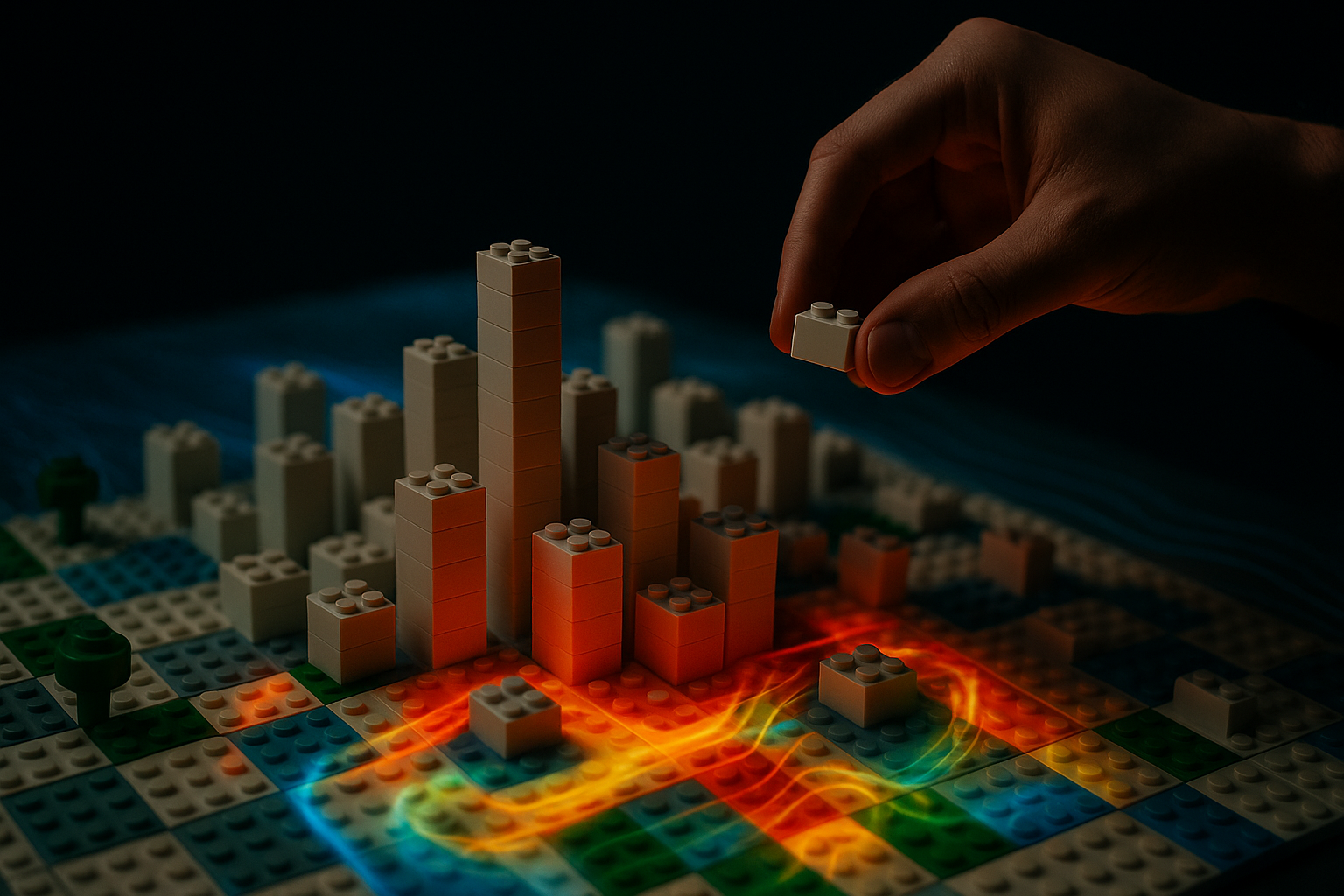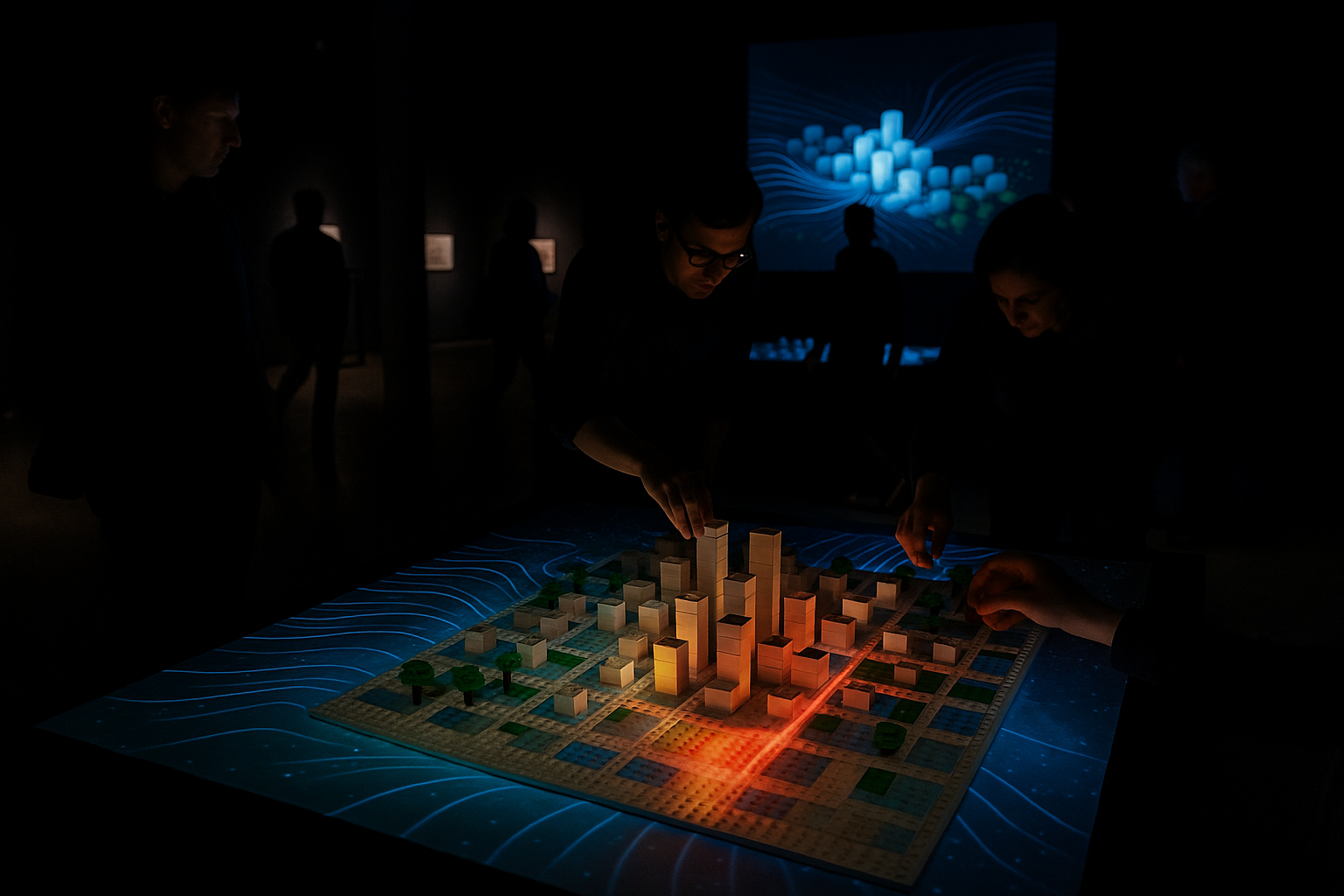
Urban Micro-climate Sandbox is a tangible urban climate laboratory that weaves together CityScope-style urban modeling with the ethos of Tangible Bits. Using LEGO models that replicate existing urban blocks, participants—children, residents, planners, and non-experts—can physically rearrange the city in front of them. As they stack and move bricks to change building heights, open spaces, vegetation, and water features, a real-time simulation responds on an adjacent screen, revealing how the city’s micro- and macro-climate behaves—both at the scale of a single hotspot and as part of a larger, connected system.

A physical LEGO model of an existing neighborhood is linked directly to a digital twin. When participants raise a tower with extra bricks, the corresponding building in the virtual city grows taller, and the system recalculates how wind accelerates through street canyons and how that “building wind” affects walkers at ground level. Removing structures to create plazas or inserting new volumes shifts airflow across the district, changing shade patterns, surface temperature, and thermal comfort. Specialized LEGO pieces stand in for trees, water, asphalt streets, bare soil, and grass. Adding a line of street trees can lower perceived temperature and create comfortable micro-habitats; introducing vegetation or bioswales cools the air through evapotranspiration; carving out a park or paving over a courtyard alters how heat, wind, and moisture circulate.
Beyond numeric climate indicators, the system also visualizes shifts in spatial perception and emotional atmosphere—such as openness, enclosure, visibility, and a sense of safety. As the miniature city is reconfigured, the interface links physical changes in form and material to feelings of pressure, release, and psychological comfort in outdoor spaces. This combination of hands-on interaction and computational simulation draws from the lineage of Tangible Bits and the CityScope platform, enabling participants to understand urban form not only as geometry, but as a living environmental and social system.

More than a planning tool, Urban Micro-climate Sandbox is conceived as an interactive artwork: a shared device for sensing what happens when we intervene in the urban fabric, and for rehearsing alternative futures in miniature. Ultimately, it empowers communities to co-design climate-responsive cities by making microclimate knowledge public, interactive, and graspable—and by inviting people to rethink what “comfortable,” “livable,” and “desirable” urban environments could be.
